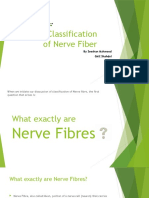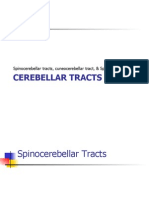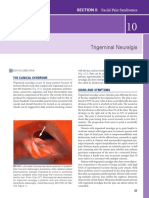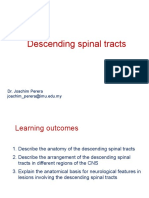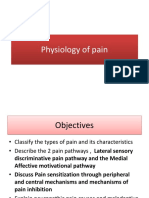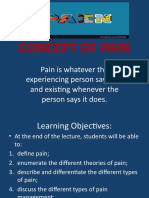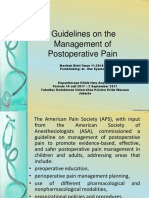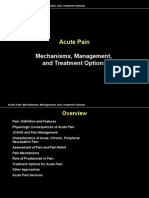0% found this document useful (0 votes)
241 views3 pagesPain Pathway: Presented By: Roland E. Mallarez
The document describes two pain pathways: the neospinothalamic tract and paleospinothalamic tract. The neospinothalamic tract transmits fast, sharp pain via Aδ fibers terminating in the brainstem and thalamus, allowing for easy localization. The paleospinothalamic tract transmits slow, chronic pain via C fibers terminating mostly in the brainstem, resulting in poorly localized pain. Both pathways transmit different types of pain and differ in their nerve fibers, conduction speed, and areas of termination in the brain.
Uploaded by
Land MallarezCopyright
© © All Rights Reserved
We take content rights seriously. If you suspect this is your content, claim it here.
Available Formats
Download as PPTX, PDF, TXT or read online on Scribd
0% found this document useful (0 votes)
241 views3 pagesPain Pathway: Presented By: Roland E. Mallarez
The document describes two pain pathways: the neospinothalamic tract and paleospinothalamic tract. The neospinothalamic tract transmits fast, sharp pain via Aδ fibers terminating in the brainstem and thalamus, allowing for easy localization. The paleospinothalamic tract transmits slow, chronic pain via C fibers terminating mostly in the brainstem, resulting in poorly localized pain. Both pathways transmit different types of pain and differ in their nerve fibers, conduction speed, and areas of termination in the brain.
Uploaded by
Land MallarezCopyright
© © All Rights Reserved
We take content rights seriously. If you suspect this is your content, claim it here.
Available Formats
Download as PPTX, PDF, TXT or read online on Scribd
/ 3







